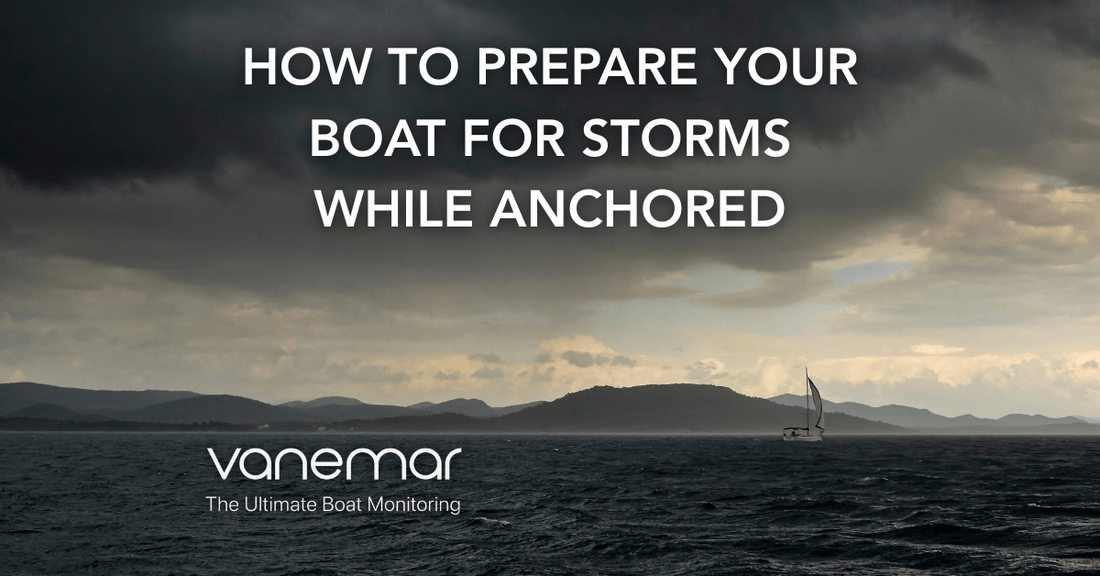
How to Prepare Your Boat for Storms While Anchored
Few experiences test a boater’s seamanship and nerves like a storm at anchor. The boat rolls, winds howl, rain lashes, and every creak of chain can feel like the start of dragging. While anchoring in bad weather is part of life at sea, it doesn’t have to be a terrifying ordeal. With solid preparation, safe anchoring practices, and techniques to manage the natural fears that arise, you can ride out heavy weather with confidence.
This guide brings together practical heavy weather anchoring tips and psychological coping strategies to help you prepare for storms at anchor, because staying calm and in control is just as important as staying secure.
Table of contents
Understanding Storm Risks at Anchor
Storms introduce several key dangers for anchored boats:
Anchor drag: Strong winds or shifting directions can pull an anchor free.
Gear failure: Shackles, swivels, and lines can part under strain.
Wind shifts: A calm, protected anchorage can become exposed if the wind veers.
Poor visibility: Darkness or heavy rain can make it harder to assess your position.
Recognizing these risks is the first step toward managing them. Anchoring in storms is about preparation, reducing the likelihood of problems and ensuring you’re ready if they arise.
Pre-Storm Preparation Checklist
When bad weather is forecast, preparation is your strongest defense. Here’s a step-by-step checklist:
1. Anchoring Setup
Choose the right spot: Seek shelter with good holding ground, ideally sand or mud. Avoid crowded anchorages where dragging boats can collide.
Set your anchor well: Power back on the anchor to ensure it bites deeply. A properly set anchor is more important than the size of your ground tackle.
Scope is key: In heavy weather, use at least 7:1 scope (seven times the depth). More scope equals better holding.
Consider a second anchor: A Bahamian moor or V-configuration can reduce swinging and load on the main anchor.
2. Securing the Boat
Reduce windage: Remove canvas, sails, and anything loose on deck.
Close and secure hatches: Keep water out and reduce the chance of damage.
Double-check lines: Chafe protection on snubbers, dock lines, and bridles is essential.
3. Safety Gear & Monitoring
Life jackets ready: Everyone on board should have easy access to PFDs.
VHF at hand: Keep channels open for weather updates and distress calls.
Anchor alarms: A GPS-based alarm or a boat monitoring system like Vanemar with smart alerts provides early warning if you start to drag.
Check batteries: Storms can last for hours; ensure house batteries are topped up.
During the Storm: Best Practices
Once the storm hits, it’s about vigilance and smart responses.
Maintain anchor watch: Assign shifts if you have crew. Regularly check bearings, GPS positions, and anchor alarms.
Ease the loads: If strain builds, deploy a second anchor or use a bridle to spread forces.
Stay inside when possible: Lightning and strong gusts make the deck dangerous.
Communicate: Keep in touch with nearby boats if safe to do so. Cooperation helps in emergencies.
Remember: most anchors hold far better than you expect. Trust your setup unless clear signs of dragging appear.
Coping with Fear & Stress
Even seasoned sailors admit storms at anchor are stressful. Fear is normal, but manageable.
Breathe deliberately: Slow, steady breathing calms the nervous system.
Focus on time blocks: Instead of worrying about “all night,” focus on making it through the next 30 minutes.
Trust your preparation: Remind yourself you’ve done everything possible to secure the boat.
Reassure crew: Calm words and clear instructions reduce panic in others.
Some skippers also find comfort in having a system to see their boat’s status. With monitoring apps like Vanemar, you can view battery voltage, bilge activity, and GPS position in real time; small confirmations that everything is holding steady.
When to Cut Loose
There are rare times when staying at anchor becomes more dangerous than leaving. Signs it may be safer to move:
Persistent dragging despite resetting.
Rapidly changing wind direction that exposes your anchorage.
Nearby boats dragging into collision paths.
Weighing anchor in a storm is a last resort, but every skipper should know the escape route and have the engine ready if it’s needed.
Recovery After the Storm
When the skies clear, take time to recover both practically and emotionally.
Inspect gear: Check anchor, chain, lines, and deck fittings for damage or wear.
Note lessons learned: Log what worked and what didn’t which is valuable for the next storm.
Restore readiness: Re-rig sails, reopen hatches, and recharge batteries.
Acknowledge resilience: Every storm endured builds confidence for the future.
Key Takeaways
Anchoring in bad weather is one of the most challenging aspects of boating, blending seamanship with emotional resilience. By preparing properly, following storm anchoring best practices, and adopting strategies to stay calm, you can face heavy weather with greater safety and confidence.
Storm preparation at anchor isn’t just about technique; it’s about mindset. The more storms you survive, the more you realize that preparation and patience carry you through.
Quick FAQs
What is the best anchor for storms?
There’s no single answer, but modern anchors like Rocna, Mantus, or Spade are designed for excellent holding in varied seabeds. More important is that the anchor is properly set with adequate scope.
Should I use two anchors in heavy weather?
A second anchor can help, especially in shifting winds, but it adds complexity. If you’re inexperienced, focus on setting one anchor well.
How do I know if my anchor is dragging?
Use GPS anchor alarms, visual transits on shore, or boat monitoring apps. If your position changes consistently relative to fixed objects, you may be dragging.
Is it safer to head out to sea than stay at anchor?
It depends. Offshore, a seaworthy boat can ride waves more safely than in a confined anchorage. But leaving in poor visibility or unfamiliar waters carries its own risks.
If you’d like added peace of mind, contact us for tracking your boat’s safety even in the worst conditions.



